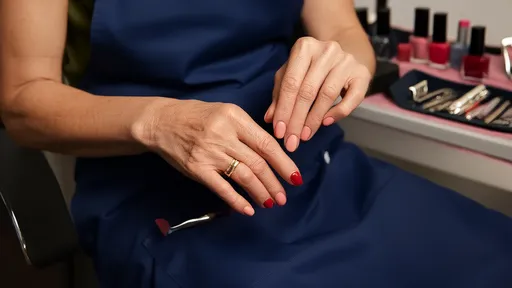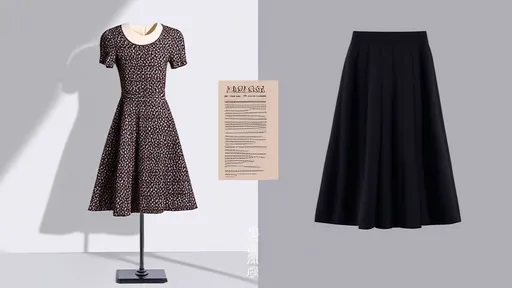In the bustling world of online shopping, product images serve as the first point of contact between consumers and merchandise. These visuals, often meticulously crafted to showcase items in their best light, can sometimes cross the line from attractive presentation to outright deception. The growing discrepancy between heavily edited product photos and the actual items received has sparked a wave of legal disputes, leaving both buyers and sellers navigating uncharted territory in e-commerce law.
The practice of digitally enhancing product images is hardly new. Retailers have long employed professional photographers, lighting technicians, and graphic designers to make their goods appear more appealing. However, with the rise of sophisticated photo-editing software and the intense competition in online marketplaces, some sellers have taken image manipulation to extremes. The result is a marketplace where consumers frequently receive products that bear little resemblance to what they thought they purchased.
Legal experts note that these cases fall into a gray area of consumer protection law. While most jurisdictions have regulations against false advertising, proving that a product image constitutes a material misrepresentation can be challenging. Courts must determine whether the differences between the advertised product and the received item are substantial enough to qualify as deceptive practices or merely reflect reasonable variations in product presentation.
One particularly contentious area involves clothing and fashion items. Online apparel retailers routinely use techniques like color correction, fabric texture enhancement, and even digital tailoring to make garments appear more flattering. Some go as far as digitally adding features that don't exist in the actual product, such as extra pockets, different stitching patterns, or non-existent fabric patterns. When customers receive items that lack these features or appear dramatically different in person, disputes inevitably arise.
The situation becomes even more complicated with marketplace platforms that host third-party sellers. Major e-commerce sites often argue they merely provide a platform for transactions and cannot be held responsible for individual sellers' product representations. This position has been tested in several high-profile cases where courts have had to determine the extent of platform liability for hosting misleading product images.
Consumer advocacy groups have pushed for stricter regulations requiring e-commerce sites to disclose when product images have been digitally altered beyond basic color correction or background removal. Some countries have implemented guidelines suggesting that significant modifications should be noted, similar to how fashion magazines sometimes indicate when images have been retouched. However, enforcement remains inconsistent across different jurisdictions.
From a seller's perspective, the pressure to present products attractively in a crowded online marketplace is immense. Many legitimate businesses argue that some level of image enhancement is necessary to compensate for the limitations of digital display. They point out that colors may appear differently on various screens, and certain product details are difficult to capture accurately in photographs. The challenge lies in distinguishing between reasonable presentation and deliberate deception.
The psychological impact on consumers cannot be overlooked. Repeated experiences with products that don't match their online representations can lead to widespread distrust in e-commerce. Some shoppers have developed coping strategies, such as deliberately lowering their expectations or only purchasing from retailers with generous return policies. This erosion of consumer confidence ultimately harms the entire digital marketplace ecosystem.
Legal remedies for affected consumers vary by region. In some jurisdictions, buyers may be entitled to refunds if products are deemed "not as described." More serious cases might qualify for compensation under consumer protection statutes. However, the process of pursuing these claims can be daunting for individual shoppers, especially when dealing with international sellers or large corporations.
Emerging technologies may offer partial solutions to this dilemma. Some platforms are experimenting with augmented reality features that allow customers to visualize products in their own environment before purchasing. Others are implementing standardized product imaging guidelines to ensure more accurate representations. However, these solutions require significant investment and industry-wide adoption to become truly effective.
The debate over product image authenticity touches on broader questions about truth in digital representations. As augmented reality and virtual shopping experiences become more sophisticated, the line between representation and reality will continue to blur. Legal frameworks will need to evolve accordingly to protect consumers while allowing businesses reasonable flexibility in presenting their products.
For now, the burden often falls on consumers to approach online shopping with caution. Reading product reviews, examining multiple images, and paying close attention to product descriptions can help mitigate disappointment. Meanwhile, regulators, platforms, and sellers continue to grapple with finding the right balance between attractive presentation and honest representation in the digital marketplace.
The resolution of this issue will require cooperation across multiple stakeholders. Clearer industry standards, more transparent disclosure practices, and better consumer education could all contribute to reducing disputes. As e-commerce continues to grow, establishing trust through accurate product representation will be essential for the long-term health of online retail.

By /Aug 13, 2025

By /Aug 13, 2025

By /Aug 13, 2025

By /Aug 13, 2025

By /Aug 13, 2025

By /Aug 13, 2025

By /Aug 13, 2025

By /Aug 13, 2025

By /Aug 13, 2025

By /Aug 13, 2025

By /Aug 13, 2025

By /Aug 13, 2025

By /Aug 13, 2025

By /Aug 13, 2025

By /Aug 13, 2025

By /Aug 13, 2025

By /Aug 13, 2025

By /Aug 13, 2025

By /Aug 13, 2025

By /Aug 13, 2025